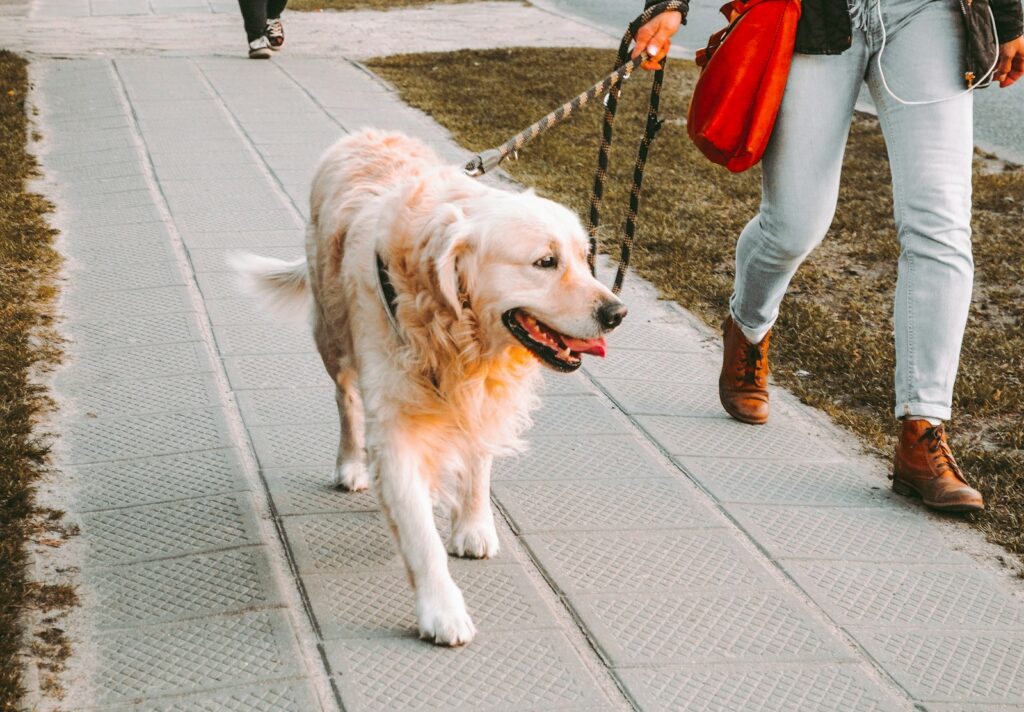Walking your furry friend can be a delightful experience, but it’s not always a walk in the park, especially if your dog tends to pull on the leash. However, with patience, consistency, and the right techniques, you can teach your canine companion to walk politely by your side without tugging or dragging you along. In this guide, I’ll walk you through step-by-step on how to train your dog to walk on a leash without pulling, ensuring both you and your pup enjoy a pleasant stroll together.
Understanding Why Dogs Pull on the Leash
Before diving into the training process, it’s essential to understand why dogs pull on the leash in the first place. Dogs pull for various reasons, including:
- Excitement: Dogs may pull because they are eager to explore their surroundings or greet other dogs and people.
- Lack of Training: If a dog has never been taught to walk properly on a leash, they may resort to pulling out of habit.
- Distractions: Dogs are naturally curious creatures and may be easily distracted by sights, sounds, and smells, causing them to pull.
- Desire for Freedom: Some dogs pull because they want to move at their own pace and feel restricted by the leash.
Understanding these reasons will help you address the underlying issues and tailor your training approach accordingly.
Equipment You’ll Need
Before you begin training your dog to walk on a leash without pulling, gather the following essential equipment:
- Flat Collar or Harness: Choose a comfortable, well-fitted collar or harness for your dog. Avoid using choke or prong collars, as they can cause discomfort and may even injure your pet.
- Leash: Opt for a sturdy leash that is the right length for your dog’s size and strength. A standard leash of 4-6 feet is typically suitable for most dogs.
- Treats: Use high-value treats that your dog finds irresistible. Small, bite-sized treats work best for training sessions.
- Patience and Consistency: Training takes time and effort, so be patient and consistent with your efforts.
Now that you have the necessary equipment let’s delve into the training process.
Training Your Dog to Walk on a Leash Without Pulling
1. Start Indoors
Begin the training process in a quiet, indoor environment where there are minimal distractions. This will allow your dog to focus on learning without being overwhelmed by external stimuli.
- Attach the leash to your dog’s collar or harness.
- Encourage your dog to walk beside you using verbal cues such as “heel” or “let’s go.”
- Reward your dog with treats and praise for walking calmly by your side.
- Practice short sessions, gradually increasing the duration as your dog becomes more comfortable.
2. Teach Loose Leash Walking
Once your dog is comfortable walking indoors, move to a quiet outdoor area with few distractions to practice loose leash walking.
- Hold the leash loosely and allow your dog some freedom to explore.
- Whenever your dog starts to pull, stop walking and wait for them to come back to your side.
- Reward your dog with treats and praise when they return to your side or walk without pulling.
- Repeat this process consistently, gradually increasing the difficulty by introducing more distractions.
3. Use Positive Reinforcement
Positive reinforcement is key to successful leash training. Whenever your dog exhibits the desired behavior of walking calmly on a loose leash, reward them with treats, praise, and affection.
- Be generous with praise and treats whenever your dog walks nicely by your side.
- Consistency is crucial; reward your dog every time they walk without pulling.
- Avoid using punishment or harsh corrections, as this can create fear and undermine the trust between you and your dog.
4. Be Patient and Persistent
Leash training takes time and patience, so don’t expect overnight results. Be prepared to invest time and effort into consistent training sessions.
- Stay calm and patient, even if progress is slow.
- Celebrate small victories and be persistent in your training efforts.
- Remember that every dog learns at their own pace, so be patient and encouraging throughout the process.
Common Challenges and Solutions
1. Pulling Towards Other Dogs or People
If your dog tends to pull towards other dogs or people, use the following techniques:
- Practice the “watch me” command to redirect your dog’s attention back to you.
- Increase the distance between your dog and the trigger to reduce their excitement.
- Reward your dog for focusing on you instead of the distraction.
2. Pulling on Walks
If your dog continues to pull on walks, try the following strategies:
- Stop walking whenever your dog pulls and wait for them to calm down before continuing.
- Use a front-clip harness to discourage pulling by redirecting your dog’s forward momentum.
- Engage your dog in mental and physical exercise before walks to help reduce their energy levels.
3. Fear or Anxiety
If your dog exhibits fear or anxiety on walks, take the following steps:
- Gradually introduce your dog to new environments and stimuli at their own pace.
- Use positive reinforcement to build your dog’s confidence and associate walks with positive experiences.
- Consult a professional dog trainer or behaviorist for additional guidance and support.
Conclusion
Training your dog to walk on a leash without pulling requires patience, consistency, and positive reinforcement. By understanding the reasons behind leash pulling and using the right techniques, you can teach your furry friend to walk politely by your side, making walks together a more enjoyable experience for both of you.
Remember to be patient, stay consistent, and celebrate small victories along the way. With time and dedication, you and your dog can master the art of leash walking and enjoy many happy adventures together.
Frequently Asked Questions (FAQs)
Q: How long does it take to leash train a dog?
A: The time it takes to leash train a dog varies depending on factors such as age, breed, and previous training experiences. Consistent training efforts typically yield results within a few weeks to a few months.
Q: What type of collar or harness is best for leash training?
A: A flat collar or harness that fits comfortably and securely is suitable for leash training. Avoid using choke or prong collars, as they can cause discomfort and may even harm your dog.
Q: How often should I practice leash training with my dog?
A: Aim for short training sessions several times a day to keep your dog engaged and focused. Gradually increase the duration and difficulty of training as your dog progresses.
Q: My dog pulls on walks despite training efforts. What should I do?
A: If your dog continues to pull on walks, reassess your training techniques and consider seeking guidance from a professional dog trainer or behaviorist. They can provide personalized advice and support to address your dog’s specific needs.



